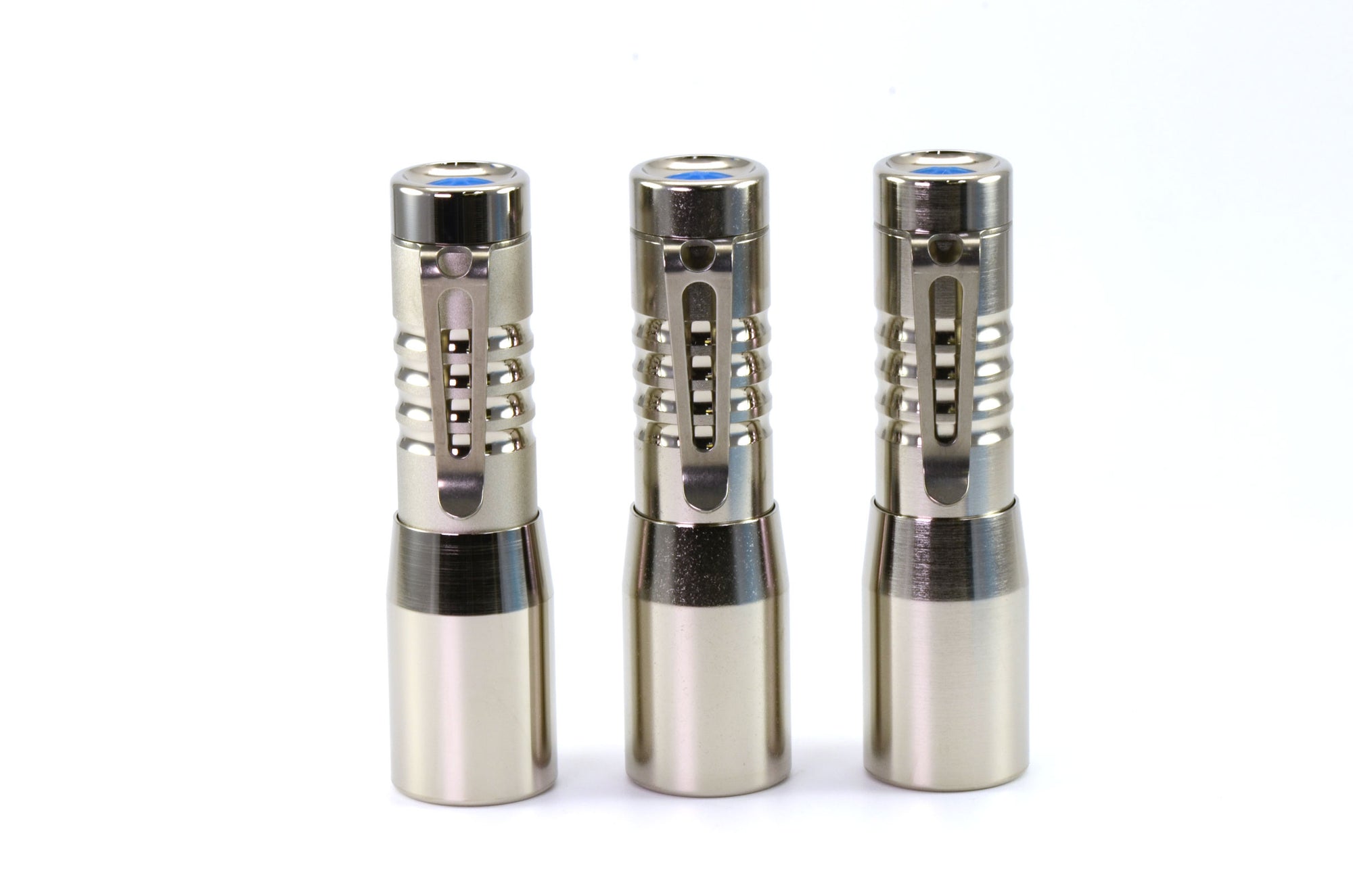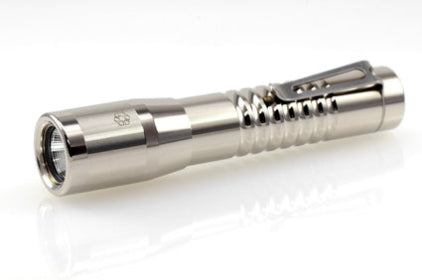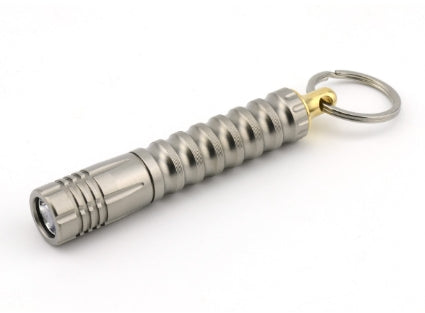Alpha "Shorty" Classic Triple
Blue Label lights are assembled to order and may take up to two weeks to ship.
{"name":"FINISH","position":1,"values":["BLASTED \u0026 POLISHED","STONE WASH","BRUSHED"]}
 1x18350 |
 Buyer's Choice |
 850-100 |
 .5 |
 0.5 hr |
 90 hrs |
THIS VARIANT FEATURES A TRIPLE LED FORMAT AND A VARIETY OF NEW OPTIONS FOR LEDS AND OPTICS.
Same awesome, smaller size! I've been selling "shorty" bodies for Alpha flashlights for years, but occasionaly we offer them as stand-alone lights. Very occasionally. Sign up on the wait list to be notifed.
Battery type is IMR 18350 ONLY. Standard lithium ion batteries (non-IMR chemistry) in any size CANNOT handle the 3.4A current drain. Using non-IMR batteries is DANGEROUS.















- Alpha Shorty light
- 2x18350 Keeppower 1200mAh Li-Ion (IMR)
- Battery Case
- XTAR MC1 Charger (Lithium-ion ONLY)

- Maintenance kit (Nano-Oil + replacement o-rings)
- O-ring removal tool with rubber grip
- Three extra button colors of your choice
- Switch Tool (Pronged tool to aid in removal of the switch and retaining ring. 3D printed in-house!)

- Spare UCL window (glass lens) Spare McClicky tailcap switch
-
LED TypeBuyer's Choice
-
battery type18350 lithium-ion (IMR)
-
Weight3.8oz No Battery
-
Dimensions1" x 4.75" (body dia. is 1")
-
Voltage Range2.8V-4.2V
-
Beam Distance110m
-
Brightness LevelsFully User Programmable (Default is L/M/H)
-
Special ModesStrobe, Beacon, SOS (added via programming)
-
Body Material6061-T6 aluminum with Electroless Nickel plating
-
Window Glass98% transmission UCL glass (2 side AR coated)
-
Water ResistanceIPX8 (100m)
-
Included Accessories1cc Nano Oil + 2 O-rings
-
Where it's made




























